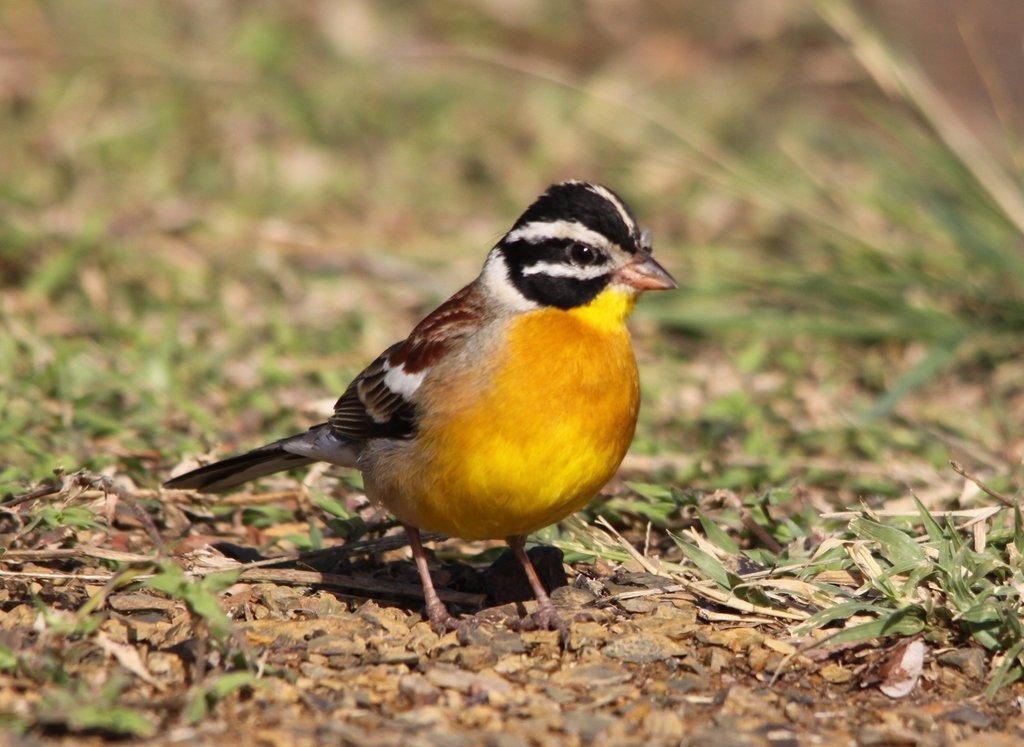Golden-breasted Bunting
A species of Old World Buntings Scientific name : Emberiza flaviventris Genus : Old World Buntings
Golden-breasted Bunting, A species of Old World Buntings
Botanical name: Emberiza flaviventris
Genus: Old World Buntings
Content
Description General Info
Description
The golden-breasted bunting is 15–16 cm long. The adult male has striking head pattern with a white crown, black lateral crown stripes, white supercilium and black-bordered white ear coverts. The underparts are orange-yellow becoming yellow on the throat and whitish on the lower belly. The upperparts are chestnut with a grey rump. The browner wings have two conspicuous white wing bars. The sexes are very similar, but females may have a buff tone to the white head markings and browner head stripes, and the back may have dark streaks. Young birds are duller and paler than the females. 
Size
16 cm
Nest Placement
Ground
Feeding Habits
Golden-breasted Bunting consumes a diet of grass seeds, soft leaves, flower buds, and various insects such as termites and caterpillars. It forages on the ground and in bushes, feeding alone or in small flocks and displays a proclivity for morning and early afternoon watering and bathing.
Habitat
The golden-breasted Bunting typically inhabits a range of open woodlands across broader geographical regions known for acacia and broadleaf forests. This species shows a preference for acacia steppe and savannah environments, usually found within drier habitats compared to its close relatives. Additionally, golden-breasted Bunting is adaptable, taking advantage of gardens in some localities and rapidly colonizing recently burnt areas. It is also present in drainage lines, even those dominated by invasive mesquite, in semi-arid regions like the Kalahari.
Dite type
Granivorous
General Info
Feeding Habits
Bird food type
Behavior
The golden-breasted bunting builds an untidy cup nest lined with fine grass or hair low in a shrub or sapling. The two or three eggs are glossy white or cream and marked with black lines. The eggs hatch in 12–13 days and the chicks fledge in another 16–17 days. The golden-breasted bunting is not gregarious, and is normally seen alone, in pairs or small groups. It feeds on the ground on seeds, insects and spiders, animal prey being taken mostly when the birds have young. This species is generally resident, but there appears to be degree of local movement. It is often quite tame. 
Species Status
Not globally threatened.
Scientific Classification
Phylum
Chordates Class
Birds Order
Perching birds Family
New world sparrows Genus
Old World Buntings Species
Golden-breasted Bunting 